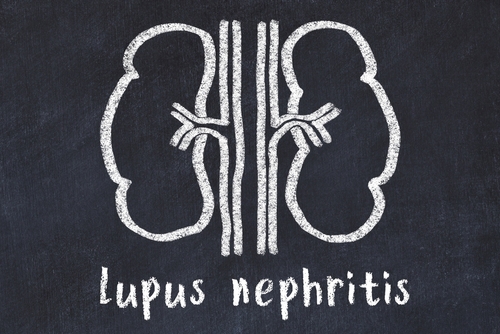
Patients with childhood end-stage kidney disease (ESKD) face a significantly diminished life expectancy compared with the general pediatric population. Among young adults treated with dialysis, mortality rates are more than 100-fold higher than their age-matched counterparts in the general population. The leading cause of death in children and adults treated with dialysis is cardiovascular disease, particularly sudden cardiac death (SCD).
There has been improvement in long-term mortality risk among children treated with dialysis in the past two decades; however, according to Elaine Ku, MD, MAS, and colleagues, the reasons for the improvements are unclear. Possible explanations include improvements in cardiovascular risk factor modification or infection prevention over time in that population.
The researchers conducted a retrospective cohort study to compare trends over time in mortality from CKD-related causes of death among children and adults <30 years of age who initiated dialysis between 1995 and 2015. Changes in CKD-related mortality risk were compared with changes in infection-related causes of death. The researchers also sought to compare risk factors for CVD-related causes of death in patients who initiated dialysis as children versus as young adults. Results of the study were reported in JAMA Network Open [2020;3(9):e2016197.doi.10.1011/jamanetworkopen.2020.16197].
The primary outcome of interest was cardiovascular cause-specific mortality. Cause-of-death data were abstracted from the Centers for Medicare & Medicaid Services death notification form that is submitted to the United States Renal Data System.
Trends in risk of different cardiovascular-related deaths were determined using Fine-Gray models. Models were adjusted for age, sex, race, neighborhood income, cause of end-stage kidney disease, insurance type, and comorbidities. Analyses were performed separately for children (age <18 years) and young adults (between ages 18 and 30 years).
The study included 80,189 children and young adults. Median age was 24 years, 45.2% (n=36,259) were women and girls, 36.8% (n=29,508) were Black, and 19.3% (n=15,516) were Hispanic White. Median follow-up was 14.3 years and the most common cause of ESKD was glomerulonephritis (37.4%). The two most common causes of death were cardiovascular disease (40.2%; n=6505/16,179) and infection-related causes (14.4%; n=2332).
Compared with the overall cohort, those who died were older at the time of initiation of dialysis (mean age, 24.3 years vs 22.5 years) and more likely to be women and girls (51.5%, n=8328) or Black (52.3%; n=8458). Patients who died were more likely to have diabetes and less likely to have glomerulonephritis as the cause of ESKD (diabetes: 4562 [28.2%] vs 11,940 [14.9%]; glomerulonephritis: 4493 [27.8%] vs 30,003 [37.4%]). In those who died, the presence of diabetes or heart failure at the time of initiation of dialysis was more common than in the overall cohort (diabetes: 5313 [32.8%] vs 14,310 [17.8%]; heart failure: 2055 [12.7%] vs 5331 [6.6%]).
Across the sequential 5-year intervals included in the analysis, age at the time of initiation of dialysis remained similar. However, over time a smaller proportion of patients initiating dialysis were Black. Generally, the prevalence of comorbid conditions at time of dialysis initiation such as heart failure or stroke were low at time of dialysis initiation and, with the exception of an increased prevalence of hypertension, did not increase over time. There was a decrease in glomerulonephritis as a cause of ESKD over time.
The overall death rate associated with cardiovascular disease was higher among patients who initiated dialysis as young adults compared with those who initiated dialysis as children. The rate of death attributed to infection-related causes was similar in the two groups. Overall, 40.2% of deaths were from causes related to cardiovascular disease (n=6506 of 16,179 patients).
Following adjustment, the rate of death related to cardiovascular disease was stable. After 2006 (vs 1995), the rate became statistically significantly lower in those initiating dialysis as children (subhazard ratio [SHR], 0.74; 95% confidence interval [CI], 0.55-1.00) or young adults (SHR, 0.90; 95% CI, 0.83-0.98).
Among deaths attributed to cardiovascular disease, SCD was 1.5 (95% CI, 1.4-1.5) per 100 person-years and up to ten times higher for children (0.9 [95% CI, 0.8-1.0] per 100 person-years) and young adults (1.5 [95% CI, 1.5-1.6] per 100 person-years compared with heart failure as the attributed cause of death (0.1 [95% CI, 0.1-0.2] per 100 person-years). Comparing 2015 to 1995, the risk for SCD improved steadily for all age groups, but to a greater degree in children.
In 2010, the risk for stroke became statistically significantly lower versus 1995 for both children (SHR, 0.40; 95% CI, 0.18-0.88) and young adults (SHR, 0.76; 95% CI, 0.59-0.99).
The authors cited some limitations to the study findings, including missing data on the cause of death in 8% of patients as well as the possibility of miscalculation of cause of death. There was also a lack of more granular data that may be needed to determine the exact reasons for changes in temporal trends in mortality over time, or changes in treatment of cardiovascular risk factors.
In conclusion, the researchers said, “Although mortality rates have improved overall in a cohort of children and young adults starting dialysis during the last 2 decades, for some outcomes risk actually increased initially only to then improve more recently, and trends varied depending on whether individuals started dialysis as children versus young adults. Given that cardiovascular disease remains the most common cause of death in this population, strategies to further improve the cardiovascular risk profile in this young population are needed to enhance survival, and modification of nontraditional cardiovascular risk factors may be needed to ensure continued improvements in outcomes for young populations starting on dialysis.”
Takeaway Points
- Researchers conducted a retrospective cohort study to examine the temporal trends in attributed causes of death, with an emphasis on cardiovascular-related causes, in young populations with end-stage kidney disease.
- Over the 20-year period examined in the study, the risk of death related to cardiovascular disease improved for both children and young adults.
- The improvement in the risk of sudden cardiac death improved more for children than for young adults; improvements in mortality related to stroke were slower and less pronounced.







 © 2025 Mashup Media, LLC, a Formedics Property. All Rights Reserved.
© 2025 Mashup Media, LLC, a Formedics Property. All Rights Reserved.